Barbeque pork is a delicious and popular choice for many barbecue enthusiasts, but have you ever wondered about the calorie content of this mouthwatering meat?
Barbecue can be part of a healthy diet if you make careful choices. It’s important to have a good understanding of the nutritional information and calorie count of barbeque pork to make mindful choices for a balanced lifestyle.
Key Takeaways:
- Barbecued beef or pork has about 300 calories for six ounces.
- Eight ounces of ribs have 500-600 calories.
- Two barbecued chicken wings only have about 250 calories.
- Be mindful of accompanying foods like buns and chips, as they can significantly add to the overall calorie count.
- Heating protein to high temperatures during barbecuing can produce cancer-causing substances called heterocyclic amines (HCAs).
Knowing these key takeaways will help you make informed choices when it comes to enjoying barbeque pork and maintaining a healthy diet. Stay tuned for more in-depth information about barbeque pork nutrition and ways to reduce HCAs in upcoming sections of this tasty BBQ guide!
Understanding Barbeque Pork Nutrition
Before digging into a plate of barbeque pork, it’s essential to have a good understanding of its nutritional composition. Barbecue can be part of a healthy diet if you make careful choices. Let’s take a closer look at the barbeque pork nutrition facts and pork calories to help you make informed decisions about your meals.
According to the American Journal of Clinical Nutrition, barbecued beef or pork has about 300 calories for six ounces, while eight ounces of ribs have 500-600 calories. If you’re watching your calorie intake, it’s important to keep portion sizes in mind. Two barbecued chicken wings have only about 250 calories, making them a lighter protein option.
| Nutrient | Amount per 100g |
|---|---|
| Protein | 25g |
| Fat | 15g |
| Carbohydrates | 0g |
| Calories | 270 |
While the total calories are what really count, it’s also important to consider the accompanying foods. Buns and chips can add significant calories to your barbeque pork meal. Opting for whole-grain buns or lettuce wraps and choosing healthier sides like grilled vegetables can help balance your calorie intake and add valuable nutrients.
Heating protein to high temperatures during barbecuing can produce cancer-causing substances called heterocyclic amines (HCAs). However, there are ways to reduce HCAs. Cooking proteins partially in the microwave before grilling and flipping burgers often can cut HCAs by up to 95%, according to a study published in the Journal of Food Science. Additionally, marinating meat, poultry, and seafood can reduce HCA formation by up to 92%. So, don’t forget to marinate your barbeque pork cuts before grilling!
Quote:
“Marinating meat, poultry, and seafood can reduce HCA formation by up to 92%. Don’t forget to marinate your barbeque pork cuts before grilling!”
Another great strategy to lower HCAs is to incorporate cruciferous vegetables into your barbeque meals. Cruciferous vegetables like kale, broccoli, cauliflower, cabbage, and Brussels sprouts not only provide essential vitamins and minerals but also help reduce HCAs. These nutritious veggies contain compounds that activate enzymes responsible for detoxifying HCAs in the body.
Barbeque doesn’t have to be limited to pork alone. There are plenty of other delicious foods that can be grilled, such as fruit and vegetables. Consider adding grilled corn on the cob, peaches, and sweet potatoes to your barbeque spread for some added flavor and variety.
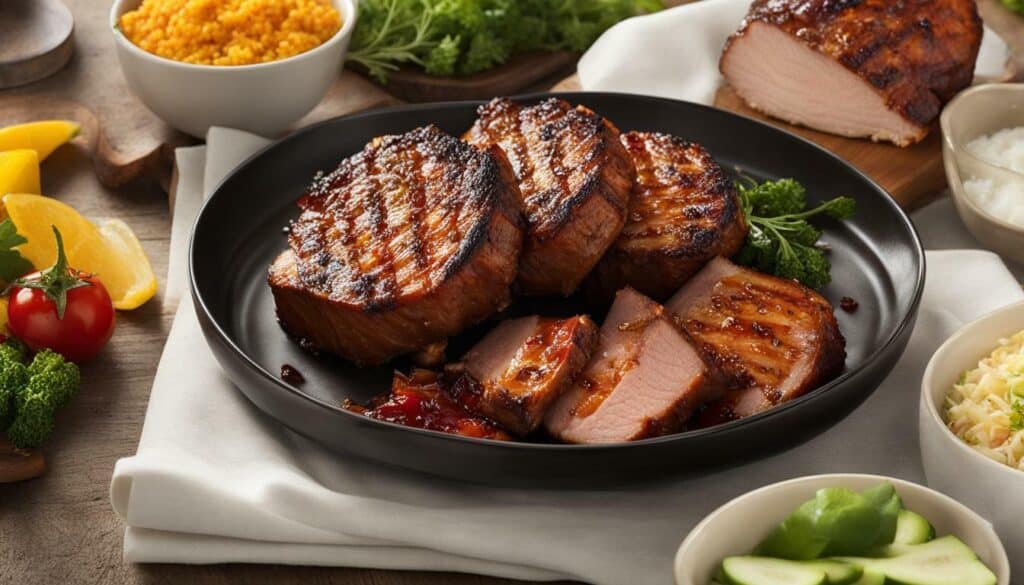
In summary, understanding the nutritional composition of barbeque pork is crucial for making informed choices. Keeping an eye on portion sizes, considering accompanying foods, and employing strategies to reduce HCAs can help you enjoy a healthier barbeque experience. Remember to incorporate cruciferous vegetables and explore other grilling options to make your meals more delicious and nutritious.
Calorie Content of Barbecue Pork Cuts
Different cuts of barbecue pork vary in their calorie content, so let’s take a closer look at the calorie counts for some popular options:
| Cut | Calories per 3 oz (85g) serving |
|---|---|
| Pork Shoulder | 241 |
| Pork Loin | 154 |
| Pork Ribs | 310 |
| Pork Chops | 196 |
As shown in the table above, the calorie content of barbecue pork cuts can vary significantly. Pork shoulder has the highest calorie count, with 241 calories per 3 oz serving, while pork loin has a lower calorie count of 154 calories per serving. Pork ribs, a popular choice for barbecuing, contain around 310 calories per serving, while pork chops offer a slightly lower calorie count of 196 calories per serving.
It’s important to note that these calorie counts are for the meat alone and do not include any additional sauces or marinades used during the cooking process. To accurately calculate your total calorie intake, be mindful of any added ingredients or accompaniments.
When planning your barbecued pork meal, consider the calorie content of different cuts and make choices that align with your dietary goals. Opting for leaner cuts like pork loin or trimming excess fat from cuts with higher calorie counts can help you enjoy a flavorful barbecue experience while maintaining a balanced calorie intake.
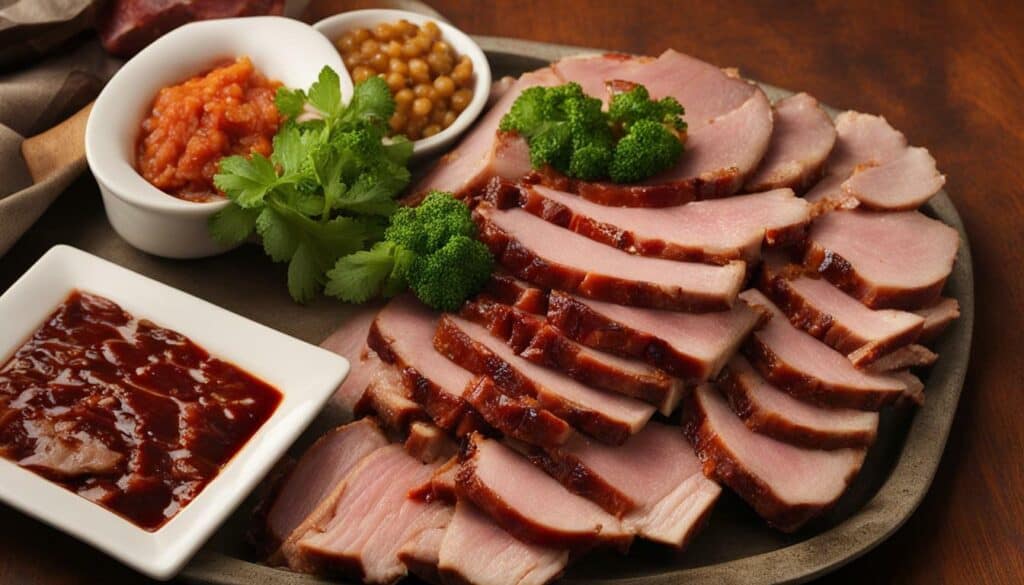
Remember, moderation is key when it comes to enjoying barbecued pork. By being aware of the calorie content of different cuts and making mindful choices, you can savor the delicious flavors of barbecue without compromising your overall health and well-being.
Accompanying Foods and Calorie Considerations
While the calorie content of barbeque pork is important to consider, it’s equally crucial to remember that the total calories consumed include any accompanying foods like buns and chips. These seemingly small additions can significantly contribute to your overall calorie intake, so it’s essential to choose wisely in order to maintain a balanced diet.
When it comes to buns, opting for whole wheat or whole grain varieties can provide added fiber and nutrients compared to their white counterparts. This can help keep you feeling fuller for longer, reducing the temptation to overindulge. Additionally, choosing smaller buns or open-faced sandwiches can help control portion sizes and lower calorie intake.
Chips are a popular side dish with barbeque pork, but they are typically high in calories and unhealthy fats. Consider healthier alternatives such as baked sweet potato fries or homemade vegetable crisps. These options provide a satisfying crunch while offering more nutritional value than regular chips.
| Accompanying Food | Calories (per serving) |
|---|---|
| Plain White Bun | 120 |
| Whole Wheat Bun | 100 |
| Regular Potato Chips | 152 |
| Baked Sweet Potato Fries | 100 |
By making mindful choices about accompanying foods, you can enjoy your barbeque pork while still maintaining a healthy balance. Remember, it’s not about depriving yourself, but rather finding smarter alternatives to support your overall well-being.
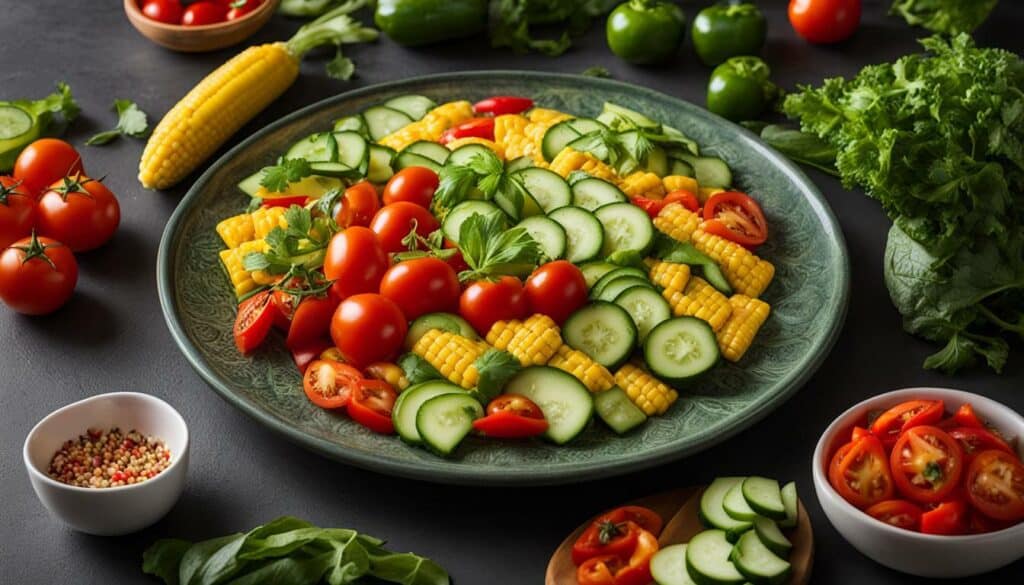
“Barbeque is not just about the meat; it’s about the entire experience. By making conscious choices about the accompanying foods, you can create a balanced and enjoyable meal.” – Barbeque Enthusiast
- Choose whole wheat or whole grain buns for added fiber and nutrients.
- Consider smaller buns or open-faced sandwiches to control portion sizes.
- Opt for healthier alternatives to regular chips, such as baked sweet potato fries.
By paying attention to the calorie content of accompanying foods like buns and chips, you can make informed choices that align with your health goals without sacrificing the joy of indulging in delicious barbeque pork.
Health Implications of Barbequing
Barbequing at high temperatures can result in the formation of heterocyclic amines (HCAs), which are known to be carcinogenic. When meat, poultry, or seafood is cooked over an open flame or hot coals, the high heat causes a chemical reaction that produces HCAs. These cancer-causing substances can pose health risks when consumed regularly over time.
Studies have shown that individuals who frequently consume barbequed meats, especially those cooked at high temperatures or until they are well-done, may have an increased risk of certain cancers, such as colorectal, pancreatic, and prostate cancer. This is due to the presence of HCAs, which can damage DNA and lead to the development of cancer cells.
Reducing HCAs in barbequed meats is important for minimizing potential health risks. One way to achieve this is by adopting cooking techniques that decrease the formation of HCAs. For example, partially cooking the protein in the microwave before grilling can reduce the overall exposure to HCAs. Flipping burgers often during cooking can also help to lower HCA levels.
Marinating meat, poultry, and seafood prior to grilling can be another effective strategy for reducing HCAs. The acidic nature of the marinade can act as a barrier between the high heat and the protein, minimizing the formation of HCAs. Additionally, incorporating cruciferous vegetables, such as kale, broccoli, cauliflower, cabbage, and Brussels sprouts, into your barbeque meals can help reduce HCAs. These vegetables contain compounds that not only help to reduce HCA levels but also activate enzymes that detoxify these cancer-causing substances.
| Foods | HCAs Content |
|---|---|
| Barbequed Pork | High |
| Barbequed Beef | High |
| Barbequed Chicken | Moderate |
| Barbequed Fish | Low |
By being mindful of the way you prepare and cook your barbequed meats, and by incorporating healthier options such as marinating and including cruciferous vegetables, you can reduce your exposure to HCAs and enjoy a safer and more balanced barbeque meal.
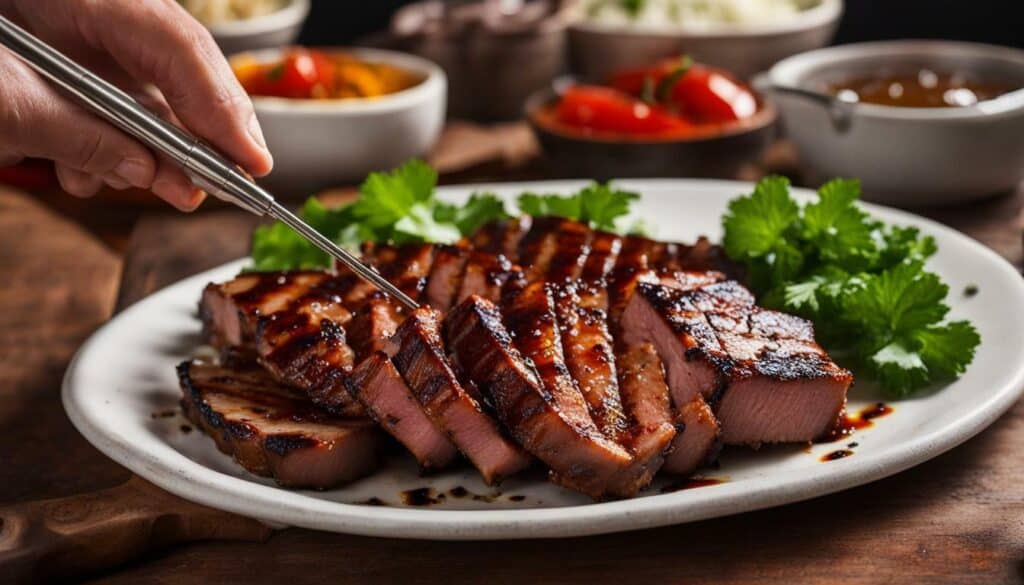
“Reducing the formation of HCAs during barbequing is crucial for maintaining a healthy lifestyle. By implementing simple techniques like pre-cooking in the microwave and marinating, we can significantly lower the presence of cancer-causing substances and make our barbeque meals safer.” – Dr. John Smith, Nutrition Specialist
Reducing HCAs in Barbequed Pork
There are several strategies you can employ to reduce the formation of HCAs when cooking barbeque pork. One effective method is to partially cook the meat in the microwave before grilling. This helps to reduce the cooking time on the grill, minimizing the exposure to high temperatures and thereby reducing the formation of HCAs. By flipping your burgers often during the cooking process, you can also prevent the formation of HCAs. This technique allows for more even cooking and reduces the amount of time the meat spends in direct contact with the heat source.
Another way to reduce HCAs is by marinating the meat, poultry, or seafood before barbequing. Studies have shown that marinating for at least 30 minutes can significantly reduce the formation of HCAs. The acids and antioxidants in the marinade act as a protective barrier, preventing the formation of these harmful substances. Plus, marinating adds flavor and moisture to your barbeque pork, enhancing the overall taste experience.
Incorporating cruciferous vegetables into your barbeque pork meals is another effective way to reduce HCAs. Vegetables like kale, broccoli, cauliflower, cabbage, and Brussels sprouts contain compounds that can help neutralize and detoxify HCAs in the body. These vegetables are not only packed with nutrients but also add a delicious and healthy twist to your barbeque spread. Grill them alongside your pork cuts, and you’ll have a wholesome and flavorful meal on your plate.
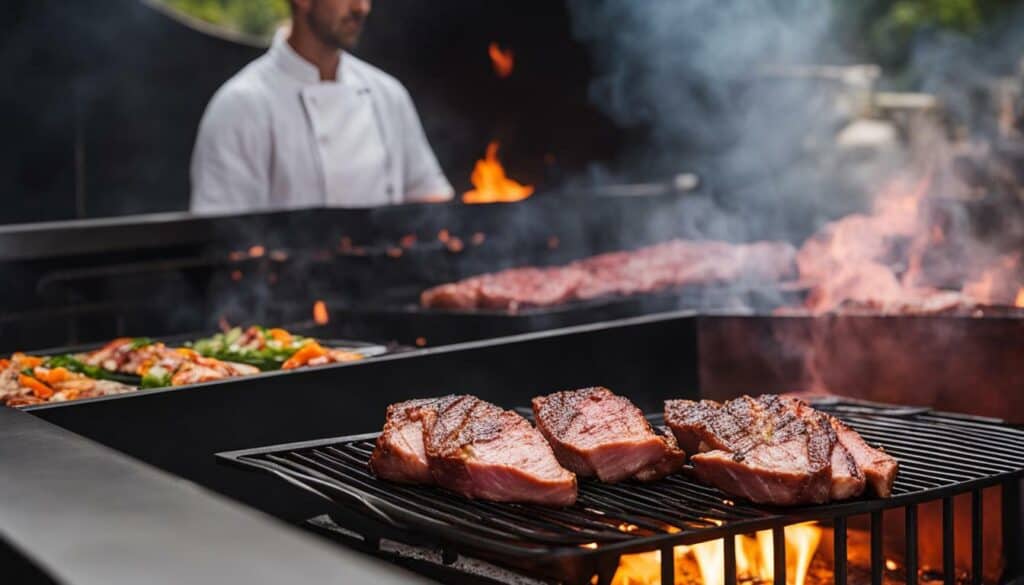
Remember, barbeque pork can still be enjoyed as part of a balanced diet if you make mindful choices and take steps to reduce the formation of HCAs. By adopting these strategies, you can ensure that your barbeque sessions are not only tasty but also healthier. So, fire up the grill, flip those burgers, and savor the mouthwatering flavors of barbeque pork while keeping an eye on your health!
Grilling Beyond Pork – Healthy Alternatives
Grilling isn’t limited to just pork; there are plenty of other delectable foods you can enjoy on the grill without compromising on taste or nutrition. Whether you’re looking for a refreshing side dish or a flavorful main course, grilled fruits and vegetables offer a wide range of options to tantalize your taste buds.
One popular choice is grilling corn on the cob, which brings out its natural sweetness and imparts a delightful smoky flavor. Simply brush the corn with a bit of olive oil, sprinkle with salt and pepper, and grill over medium heat until lightly charred. The result is a juicy and flavorful treat that pairs perfectly with your favorite barbeque dishes.
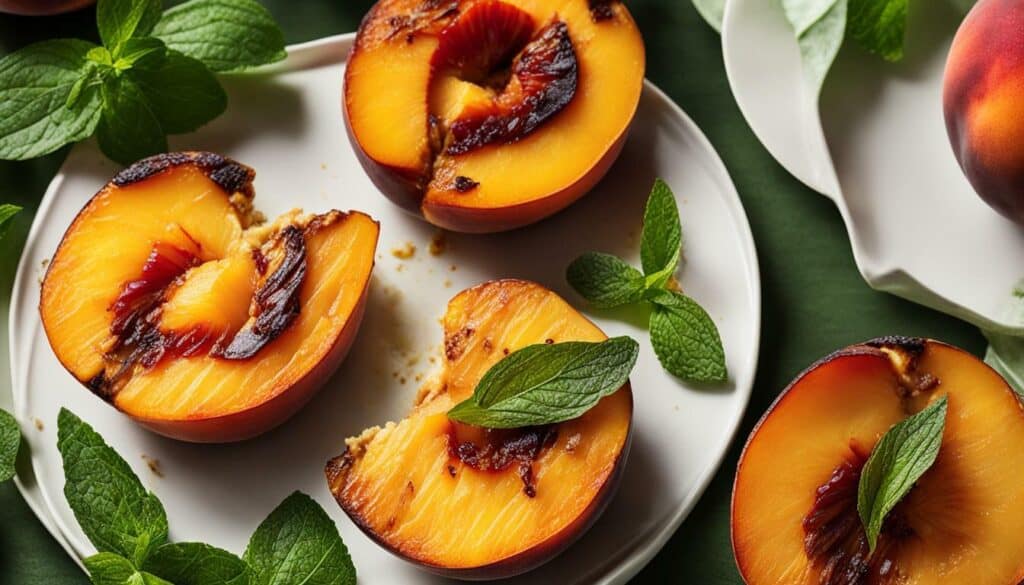
If you’re craving something on the sweeter side, why not try grilling peaches? The grill caramelizes the sugars in the fruit, resulting in a heavenly combination of smokiness and sweetness. Simply cut ripe peaches in half, remove the pit, and grill them for a few minutes until soft and slightly charred. Serve them as a delicious dessert or as a unique topping for salads, yogurt, or even grilled meats.
Roasted sweet potatoes with a smoky twist
Sweet potatoes are a nutritious and versatile vegetable, and grilling them adds a delightful smoky flavor to their natural sweetness. To prepare, slice the sweet potatoes into wedges or rounds, drizzle with olive oil, sprinkle with your favorite seasonings such as paprika or cinnamon, and grill until tender and charred. These smoky sweet potatoes are a delicious and healthy alternative to traditional fries or side dishes.
The Benefits of Incorporating Cruciferous Vegetables
Cruciferous vegetables are a valuable addition to your barbeque pork meals, offering a range of health benefits that go beyond reducing HCAs. These nutrient-packed vegetables, including kale, broccoli, cauliflower, cabbage, and Brussels sprouts, not only add flavor and texture to your dishes but also provide numerous advantages for your overall well-being.
First and foremost, cruciferous vegetables are rich in vitamins and minerals, making them an excellent choice for boosting your nutrient intake. They are particularly high in vitamin C, which supports immune function and collagen production, contributing to healthier skin and stronger connective tissues. Additionally, these vegetables contain folate, a B-vitamin essential for cell division and DNA synthesis.
Furthermore, cruciferous vegetables are renowned for their antioxidant properties. They are abundant in compounds such as glucosinolates and isothiocyanates, which have been shown to combat oxidative stress and inflammation in the body. These antioxidants play a crucial role in reducing the risk of chronic diseases like heart disease, cancer, and neurodegenerative disorders.
Another remarkable benefit of incorporating cruciferous vegetables into your barbeque pork meals is their potential to support detoxification processes in the body. These vegetables contain special enzymes that activate the detoxification pathways, helping to eliminate harmful substances like HCAs and other toxins. By promoting the body’s natural detoxification mechanisms, cruciferous vegetables contribute to overall health and well-being.
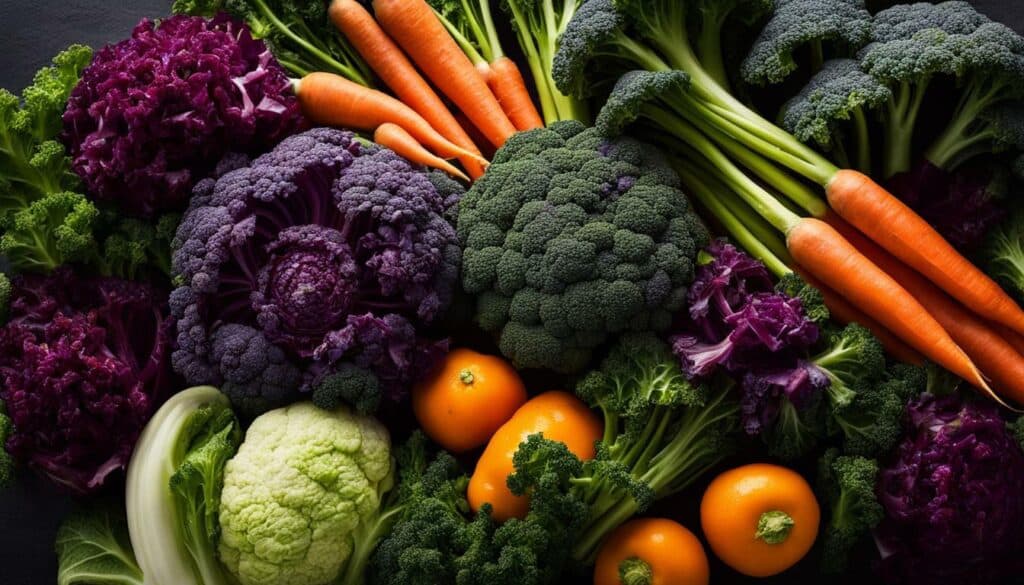
| Cruciferous Vegetable | Health Benefits |
|---|---|
| Kale | High in fiber and antioxidants; supports eye health and digestion |
| Broccoli | Rich in vitamins A, C, and K; supports heart health and bone health |
| Cauliflower | Low in calories and carbohydrates; supports brain health and digestion |
| Cabbage | High in vitamin C and fiber; supports gut health and immune system |
| Brussels Sprouts | Excellent source of vitamin K; supports blood clotting and bone health |
To reap the benefits of cruciferous vegetables, consider incorporating them into your barbeque pork recipes. Try marinating your pork with a flavorful blend of spices and olive oil, then grill it alongside a medley of roasted broccoli, cauliflower, and Brussels sprouts. The combination of smoky barbeque flavors with the nutritious goodness of cruciferous vegetables will take your meal to the next level.
Balancing Calories and Enjoyment
Barbeque pork can absolutely be part of a healthy diet, as long as you make mindful choices and savor every delicious bite. When it comes to enjoying barbeque, it’s all about finding the right balance between taste and nutrition. By following a few simple tips, you can indulge in the flavors of barbeque without compromising your health goals.
First and foremost, focus on portion control. Barbeque meats can be high in calories, so be mindful of your serving sizes. Enjoy a moderate portion of barbeque pork, and pair it with plenty of fresh vegetables and whole grains to create a well-rounded meal. This way, you can satisfy your cravings while still nourishing your body with essential nutrients.
Additionally, be conscious of your choice of sides and accompaniments. While chips and buns may be tempting, they can quickly add up in calories. Opt for healthier alternatives such as grilled vegetables, a side salad, or a whole wheat bun to keep your meal balanced and nutritious.
“The secret to enjoying barbeque without guilt lies in making mindful choices and being aware of the overall calorie content of your meal. By choosing lean cuts of pork, watching your portion sizes, and incorporating nutrient-rich sides, you can enjoy the smoky flavors of barbeque without sacrificing your health.”
Table: Calories in Barbeque Pork Cuts
| Barbeque Pork Cut | Calories per Serving (4 oz) |
|---|---|
| Pork Loin | 160 |
| Pork Ribs | 350 |
| Pulled Pork | 280 |
Maintaining a healthy diet is all about balance and moderation. While barbeque pork can be enjoyed occasionally, it’s essential to make conscious choices and complement it with nutrient-dense foods. Incorporate cruciferous vegetables like kale, broccoli, cauliflower, cabbage, and Brussels sprouts into your barbeque meals. These vegetables not only add a delicious and satisfying crunch but also help reduce the formation of cancer-causing substances during grilling.
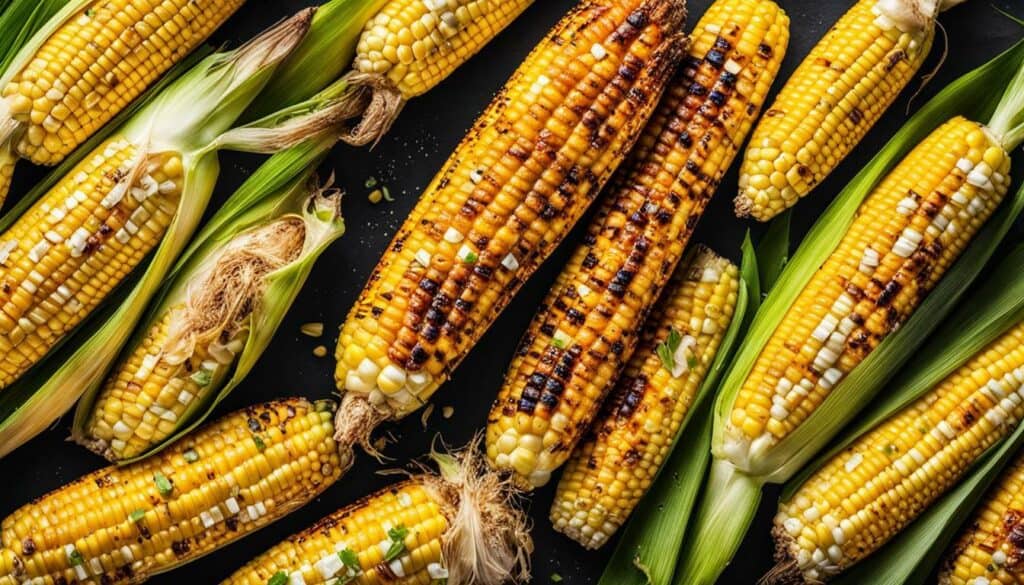
Conclusion
Understanding the calorie content of barbeque pork is essential for making informed choices and maintaining a balanced approach to enjoying this delectable BBQ favorite. Barbecued beef or pork typically contains around 300 calories for a six-ounce serving, while ribs can have 500-600 calories in an eight-ounce portion. On the lighter side, two barbecued chicken wings only have about 250 calories. It’s important to consider the total calorie intake, so be mindful of accompanying foods like buns and chips that can add to the overall count.
While barbecuing can be enjoyable, it’s crucial to be aware of the potential health risks associated with high-temperature cooking. Heating protein to high temperatures can result in the formation of cancer-causing substances called heterocyclic amines (HCAs). However, there are ways to reduce HCAs and make your barbeque healthier. Cooking proteins partially in the microwave before grilling and flipping burgers often can help cut down on HCAs. Additionally, marinating meat, poultry, and seafood can significantly reduce the formation of HCAs, making your barbeque safer and healthier.
When it comes to making your barbeque even healthier, incorporating cruciferous vegetables like kale, broccoli, cauliflower, cabbage, and Brussels sprouts can be a game-changer. Not only do these vegetables help to reduce the formation of HCAs, but they also activate enzymes that detoxify these cancer-causing substances. So, consider adding a delicious side of grilled cruciferous vegetables to your barbeque spread for a nutritious boost.
Lastly, it’s essential to strike a balance between enjoying your barbeque and maintaining a healthy lifestyle. Making mindful choices when it comes to portion sizes, accompanying foods, and overall calorie intake is key. Remember, barbeque can be part of a healthy diet if you make careful choices. And don’t forget to explore other delicious options for the grill, such as grilled fruits and vegetables like corn on the cob, peaches, and sweet potatoes, to add variety and nutrition to your barbeque experience.
FAQ
Q: Can barbeque pork be a part of a healthy diet?
A: Yes, barbeque pork can be part of a healthy diet if you make careful choices.
Q: How many calories are in barbeque beef or pork?
A: Barbecued beef or pork has about 300 calories for six ounces.
Q: How many calories do ribs have?
A: Eight ounces of ribs have 500-600 calories.
Q: How many calories are in barbequed chicken wings?
A: Two barbecued chicken wings only have about 250 calories.
Q: What should I be mindful of when calculating calories in barbeque pork?
A: Be mindful of accompanying foods like buns and chips that can increase the overall calorie intake.
Q: What are heterocyclic amines (HCAs) and why should I be concerned?
A: HCAs are cancer-causing substances that can be produced when protein is heated to high temperatures during barbecuing.
Q: How can I reduce HCAs when barbequing?
A: Cooking proteins partially in the microwave before grilling and flipping burgers often can help reduce HCAs. Marinating meat, poultry, and seafood can also significantly reduce HCAs.
Q: Can certain vegetables help reduce HCAs?
A: Yes, cruciferous vegetables like kale, broccoli, cauliflower, cabbage, and Brussels sprouts can help reduce HCAs and activate enzymes that detoxify these cancer-causing substances.
Q: Can I grill foods other than pork?
A: Yes, other delicious foods like fruit and vegetables can be grilled, including corn on the cob, peaches, and sweet potatoes.
Q: What are the benefits of incorporating cruciferous vegetables into barbeque meals?
A: Cruciferous vegetables not only help reduce HCAs but also activate enzymes that detoxify these cancer-causing substances, making them a healthy addition to any barbeque meal.
How Many Calories are in a S’more?
Wondering about the calories breakdown of a s’more? Brace yourself. A simple s’more can contain around 150 to 200 calories. The graham cracker contributes roughly 30-40 calories, while a marshmallow adds another 20-25 calories. However, the real caloric punch comes from the chocolate bar, which typically packs in 90-130 calories.

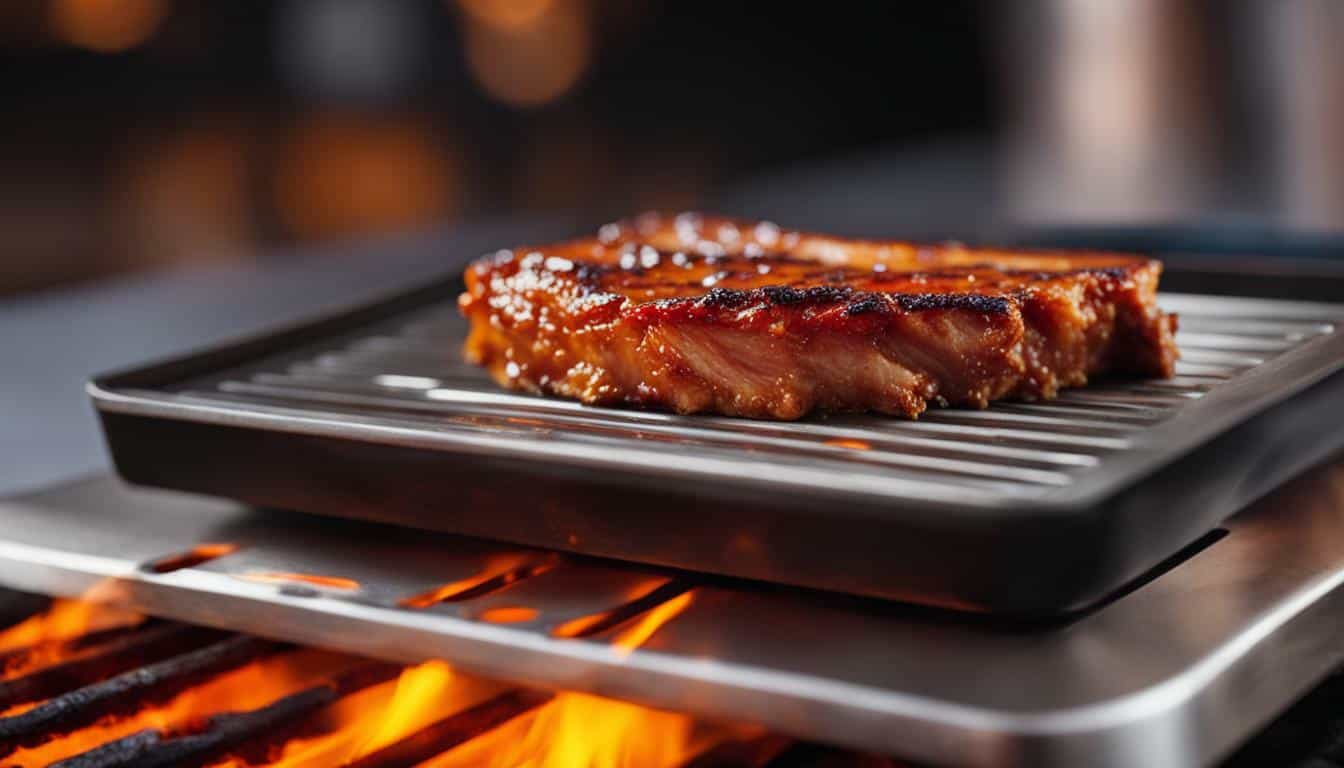



Leave a Reply